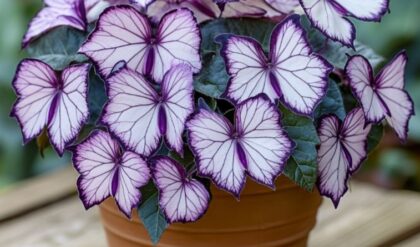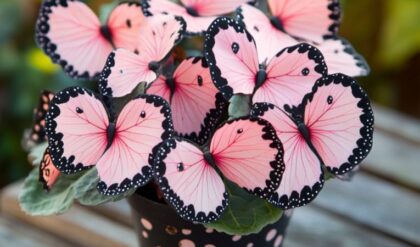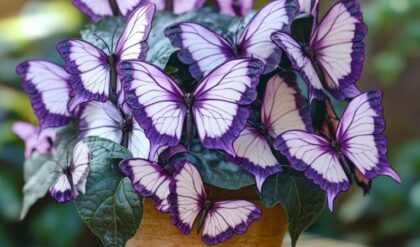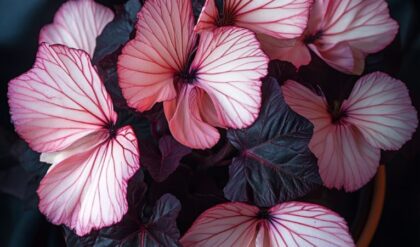Begonias, with their vibrant colors and diverse forms, have captivated gardeners and plant enthusiasts for centuries. These versatile plants, belonging to the family Begoniaceae, offer a stunning array of foliage and flowers that can brighten any space, from shady garden corners to indoor living rooms. This article delves deep into the fascinating world of begonias, exploring their rich history, incredible diversity, cultivation techniques, and the profound impact they have on both horticulture and culture.
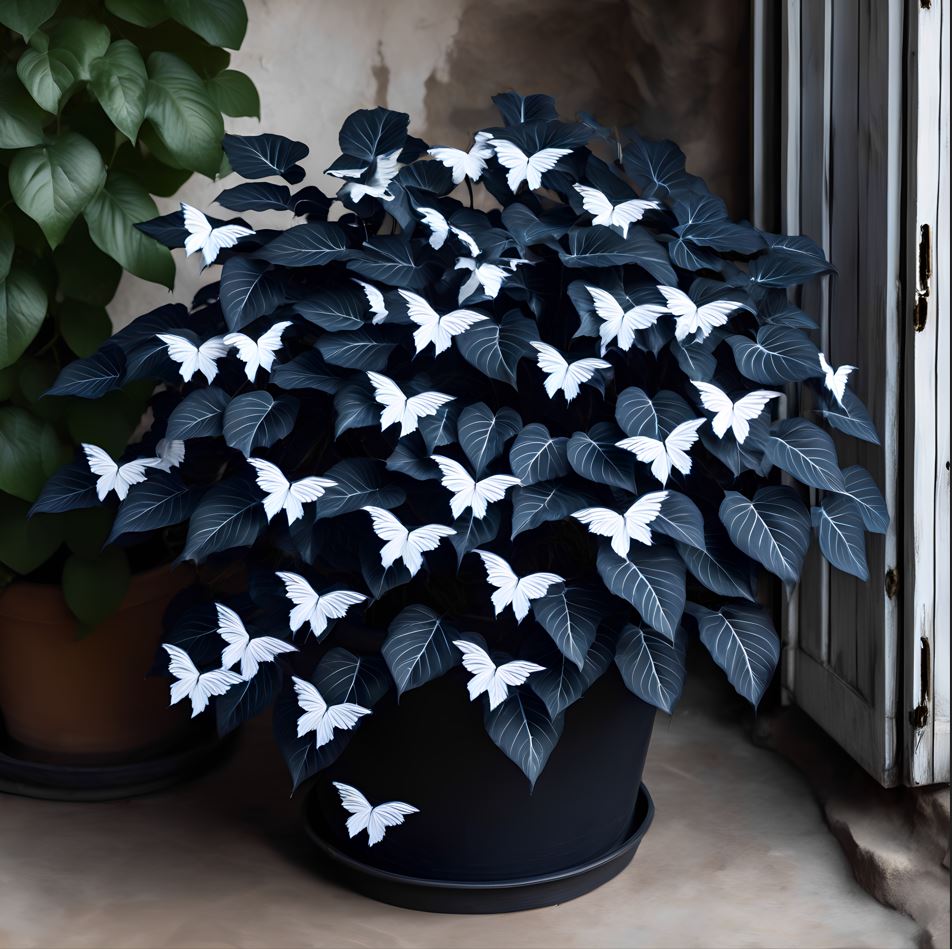
The Colorful History and Evolution of Begonias
Begonias have a storied past that spans continents and centuries. Their journey from wild species to beloved ornamentals is a testament to human curiosity and the allure of natural beauty.
The begonia genus, named after Michel Bégon, a former governor of the French Antilles, has roots that stretch back millions of years. Fossil evidence suggests that begonias have been adorning our planet since the late Cretaceous period, evolving alongside flowering plants and adapting to various ecological niches.
Ancient Origins and Global Distribution
Begonias are believed to have originated in tropical and subtropical regions, with their ancestral home likely in South America. Over millions of years, they spread across continents, diversifying into an astounding array of species.
The natural distribution of begonias spans vast areas, including parts of South and Central America, Africa, and Asia. This wide-ranging habitat has contributed significantly to the genus’s diversity, as different species adapted to local environments, from humid rainforests to rocky mountainsides.
Each region where begonias naturally occur has its own unique species, often endemic to specific areas. For instance, the Andean mountains of South America are home to numerous begonia species that have evolved to thrive in high-altitude conditions, while the tropical forests of Southeast Asia host species with large, dramatic leaves adapted to low-light environments.
Discovery and Introduction to Western Horticulture
The story of begonias in Western horticulture begins in the 16th century when European explorers first encountered these plants in their travels. Charles Plumier, a French botanist, is credited with the first scientific description of begonias in 1690, after observing them in the Caribbean.
As exploration and trade expanded in the 18th and 19th centuries, more begonia species were discovered and brought back to Europe. Botanists and plant collectors were enthralled by the diversity of forms and colors, sparking a wave of begonia mania among Victorian gardeners.
The Royal Botanic Gardens, Kew, played a crucial role in the popularization of begonias. Many species were cultivated and studied there, leading to the development of numerous hybrids and cultivars that would become staples in gardens worldwide.
The Rise of Begonia Breeding
The late 19th and early 20th centuries saw an explosion in begonia breeding. Horticulturists and enthusiasts began crossing different species to create new varieties with enhanced characteristics, such as larger flowers, unique leaf patterns, or improved hardiness.
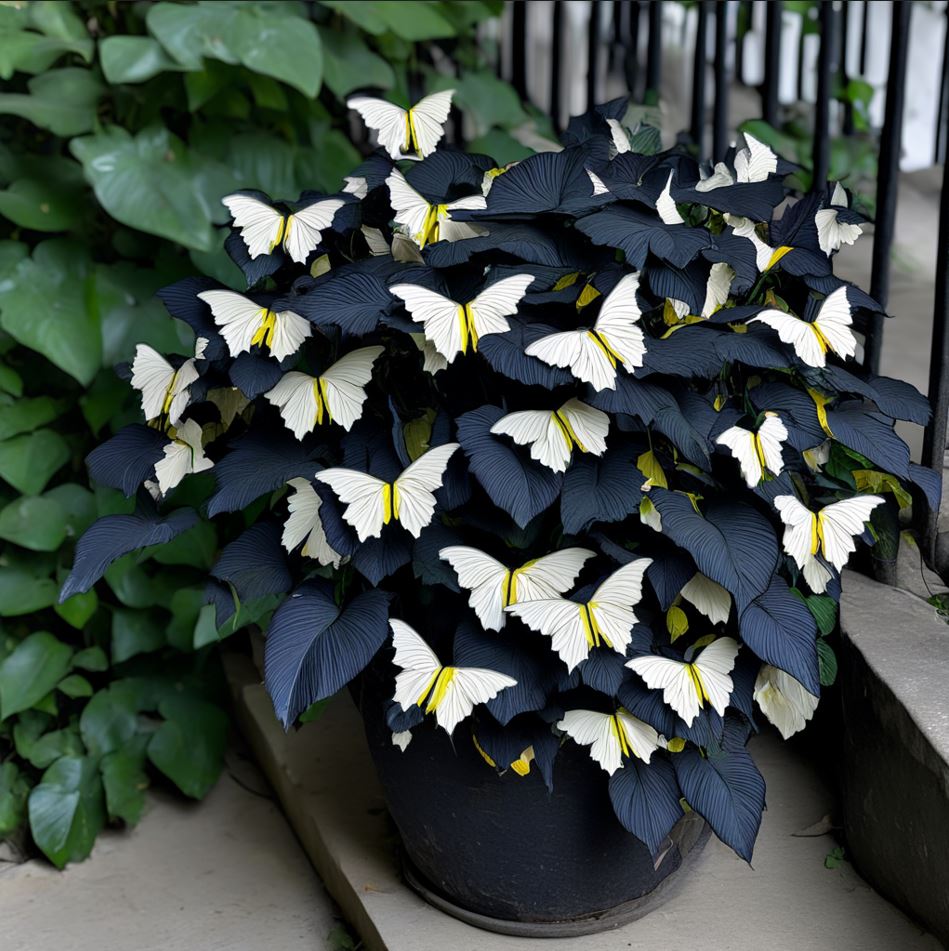
One of the most significant developments in begonia breeding was the creation of the tuberous begonia hybrids. These plants, derived from Andean species, produced large, showy flowers in a rainbow of colors, quickly becoming favorites for summer bedding displays.
The Rex begonias, prized for their spectacular foliage, also emerged as a result of intensive breeding efforts. These plants, with their kaleidoscopic leaf patterns and metallic sheens, transformed the perception of begonias from mere flowering plants to living works of art.
Begonias in Modern Times
Today, begonias continue to evolve both in the wild and through human intervention. Conservation efforts are underway to protect wild species threatened by habitat loss, while breeding programs continue to push the boundaries of what’s possible in begonia cultivation.
The advent of genetic research has opened new avenues for understanding begonia diversity and evolution. Scientists are now able to trace the genetic lineages of different species, providing insights into their relationships and evolutionary history.
Modern begonia cultivars combine the best traits of their wild ancestors with innovations in plant breeding. From compact varieties perfect for small urban spaces to dramatic hanging basket types that cascade with flowers, begonias have adapted to suit almost every gardening need and aesthetic preference.
The Astonishing Diversity of Begonia Species and Cultivars
The world of begonias is a testament to nature’s creativity, showcasing an incredible range of forms, colors, and growth habits. With over 1,800 known species and countless cultivars, begonias offer something for every taste and growing condition.
Fibrous-Rooted Begonias: The Versatile Beauties
Fibrous-rooted begonias are perhaps the most widely recognized and cultivated group. These plants, characterized by their dense, fibrous root systems, are prized for their continuous blooming and adaptability to various growing conditions.
The wax begonia (Begonia semperflorens) is a classic example of this group. These compact plants, with their glossy leaves and cheerful flowers in shades of pink, red, and white, are staples in garden beds and container plantings worldwide. Their ability to thrive in both sun and shade makes them incredibly versatile.
Another notable member of this group is the angel-wing begonia (Begonia coccinea), known for its distinctive wing-shaped leaves and pendulous clusters of flowers. These plants can grow quite large, making them impressive specimens for indoor cultivation or sheltered outdoor spaces in mild climates.
Tuberous Begonias: The Floral Showstoppers
Tuberous begonias are renowned for their large, often double flowers that rival the beauty of roses or camellias. These plants, which grow from underground tubers, offer some of the most dramatic floral displays in the begonia world.
The flowers of tuberous begonias come in an astounding array of colors, from soft pastels to vibrant hues, and can reach sizes of up to 8 inches in diameter. Varieties like the ‘Nonstop’ series have been bred for continuous blooming, making them popular choices for hanging baskets and window boxes.
While most tuberous begonias are known for their flowers, some, like the Bolivian begonia (Begonia boliviensis), combine striking blooms with attractive foliage. These plants, with their narrow, pointed leaves and cascading habit, add a touch of exotic elegance to any garden setting.
Rex Begonias: The Foliage Fantasies
Rex begonias, often referred to as “painted-leaf begonias,” are cultivated primarily for their spectacular foliage. These plants showcase leaves that are veritable works of art, featuring intricate patterns, metallic sheens, and a kaleidoscope of colors.
The diversity within the Rex group is staggering. Some varieties, like ‘Escargot,’ feature spiraling patterns that resemble their namesake, while others, such as ‘Fireworks,’ explode with vibrant colors radiating from the leaf center.
The textures of Rex begonia leaves are equally diverse, ranging from smooth and glossy to deeply embossed or even furry. This variety in texture adds an extra dimension to theirappearance, making them a favorite among plant enthusiasts who appreciate both visual and tactile experiences in their gardens.
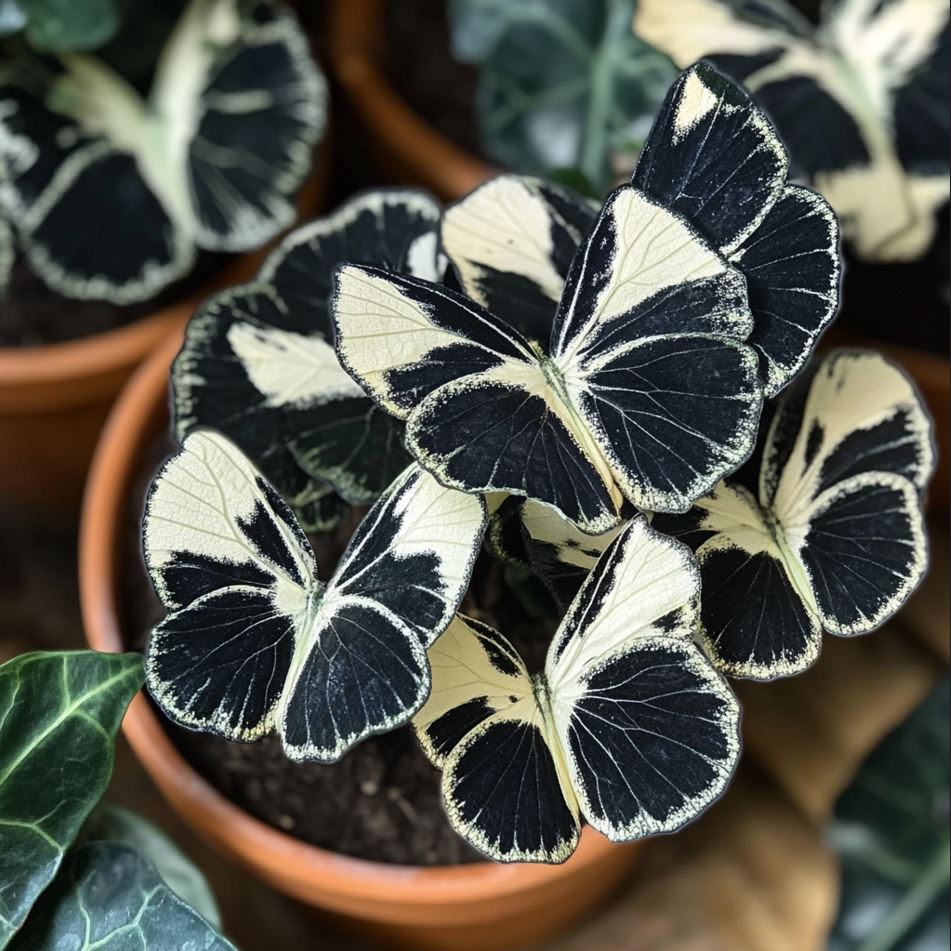
Rex begonias are not just visually stunning; they also bring unique challenges to the table. While they thrive in lower light conditions, maintaining optimal humidity is crucial for their health. Their leaves can suffer from damage in dry environments, leading to browning or crisping at the edges. Therefore, successful cultivation of Rex begonias often requires attention to their specific environmental needs, creating an intimate bond between gardener and plant.
Many cultivators find joy in experimenting with different combinations of Rex begonias, curating collections that highlight the breathtaking variety within this group. The interplay of colors, patterns, and textures makes Rex begonias ideal for indoor arrangements, where they can be appreciated up close. Whether placed on a windowsill or showcased in a terrarium, these plants never fail to evoke admiration and conversation.
Miniature Begonias: The Charming Tiny Wonders
As the name suggests, miniature begonias are characterized by their compact size, yet they pack an impressive aesthetic punch. These small varieties are perfect for gardeners with limited space or those looking to create intricate terrariums or fairy gardens.
One popular miniature variety is the ‘Little Miss Mummy,’ which exhibits vibrant foliage and delicate flowers. Its petite stature—often no taller than a few inches—makes it an ideal choice for window boxes or as a charming table centerpiece. Despite their small size, these begonias produce blooms that attract pollinators, adding life to any indoor or outdoor setting.
Miniature begonias are also significant for their adaptability; many can thrive in a range of environments, from low-light indoor spaces to shaded spots in the garden. This versatility allows gardeners to incorporate them into various designs and arrangements, showcasing their unique traits.
While miniatures may seem less demanding than their larger relatives, they still require care and attention. Overwatering can lead to root rot, while inadequate lighting can hinder their growth. Hence, understanding their requirements and providing proper care can yield delightful results, enriching the gardening experience.
The Ecological Importance of Begonias
Beyond their ornamental value, begonias play a significant role in their native ecosystems. Understanding their ecological importance offers deeper insights into the complexities of plant life and the interdependence within natural systems.
Habitat Specialists: Adaptations to Diverse Environments
Begonias have evolved remarkable adaptations that allow them to thrive in a variety of habitats, from tropical rainforests to rocky high-altitude slopes. Their ability to flourish in diverse environments speaks to their resilience and evolutionary success.
In tropical regions, many begonia species have adapted to low-light conditions under dense forest canopies. Their large, broad leaves enable them to capture sunlight effectively, while their fibrous roots help anchor them in nutrient-poor soils. Similarly, species found in mountainous areas have developed smaller, more succulent leaves to conserve moisture and endure harsher weather conditions.
These adaptations not only support begonia survival but also influence local biodiversity. By providing food and shelter for various pollinators and other organisms, begonias contribute to the stability and health of their ecosystems. Understanding these relationships emphasizes the need for conservation efforts aimed at protecting wild begonia populations and their habitats.
Conservation Challenges: Protecting Wild Species
Despite their ecological significance, many begonia species face threats from habitat destruction, climate change, and unsustainable harvesting practices. As urbanization spreads and forests are cleared for agriculture or development, begonia habitats become increasingly fragmented.
Conservation initiatives are crucial in combating these challenges. Programs aimed at protecting natural habitats and promoting sustainable land use practices can help preserve not only begonias but also the myriad of species that rely on them. Botanical gardens and research institutions play vital roles in this effort by cultivating endangered species and raising awareness about their plight.
Moreover, engaging local communities in conservation efforts can foster a sense of stewardship and responsibility toward their natural surroundings. Education programs that emphasize the importance of native plants and the role they play in local ecosystems can inspire future generations to prioritize biodiversity preservation.
The Role of Begonias in Urban Gardening
As cities expand and green spaces shrink, begonias have emerged as key players in urban gardening. Their versatility and ability to thrive in varied conditions make them ideal for small spaces, balcony gardens, and community greenspaces.
Urban gardeners often turn to begonias for their vibrant colors and unique foliage, which can enliven otherwise drab environments. Additionally, their relatively straightforward care requirements make them accessible to novice gardeners, fostering a culture of cultivation and appreciation for nature amidst urban settings.
Integrating begonias into urban landscapes has broader implications as well. Green spaces contribute to air quality improvement, temperature regulation, and overall mental well-being. By incorporating begonias into these areas, city planners and residents alike can create inviting spaces that enhance community connections and promote ecological sustainability.
Conclusion
The world of begonias is vast and fascinating, encompassing a rich tapestry of species and hybrids that continue to captivate gardeners and enthusiasts alike. From their humble beginnings in tropical rainforests to their prominent place in modern horticulture, begonias represent not only the beauty of nature but also the importance of preserving biodiversity.
Through understanding their diverse forms, ecological roles, and the challenges they face, we can foster a deeper respect for these remarkable plants. As we embrace begonias in our gardens, homes, and urban environments, we must also advocate for their conservation and protection in the wild. By doing so, we ensure that future generations will continue to enjoy the breathtaking beauty of begonias and the vital roles they play in our ecosystems.


